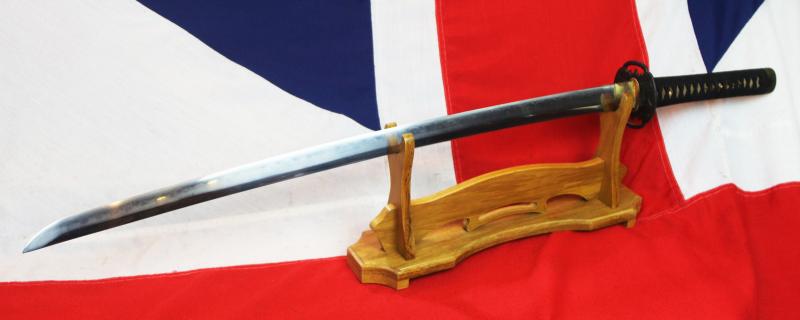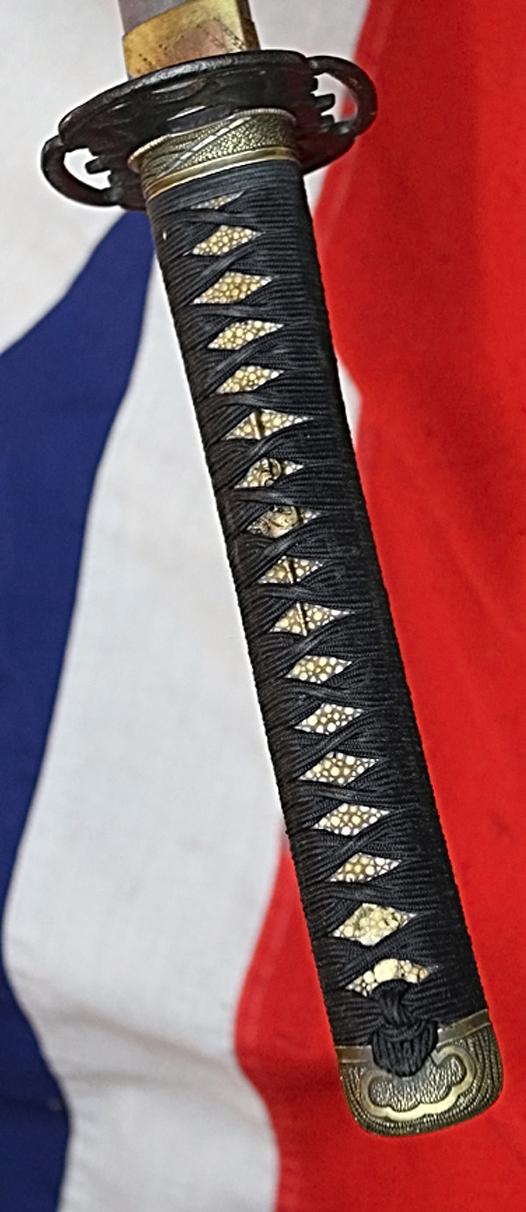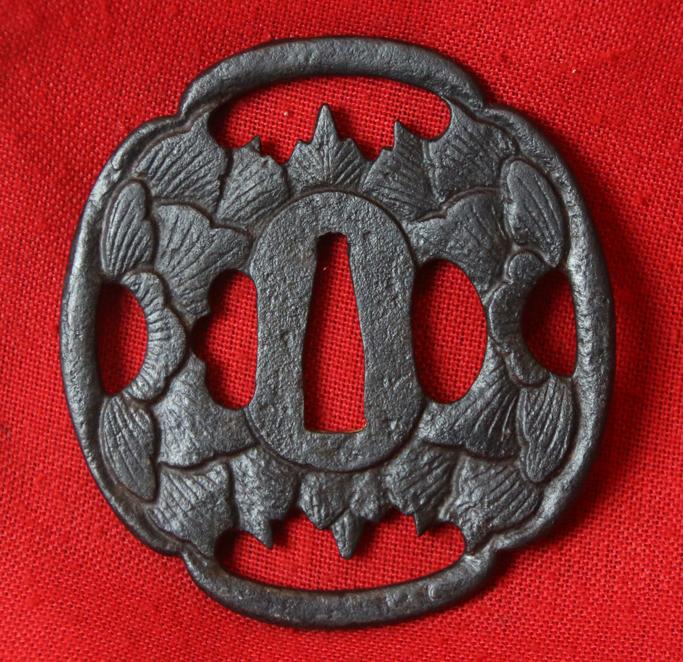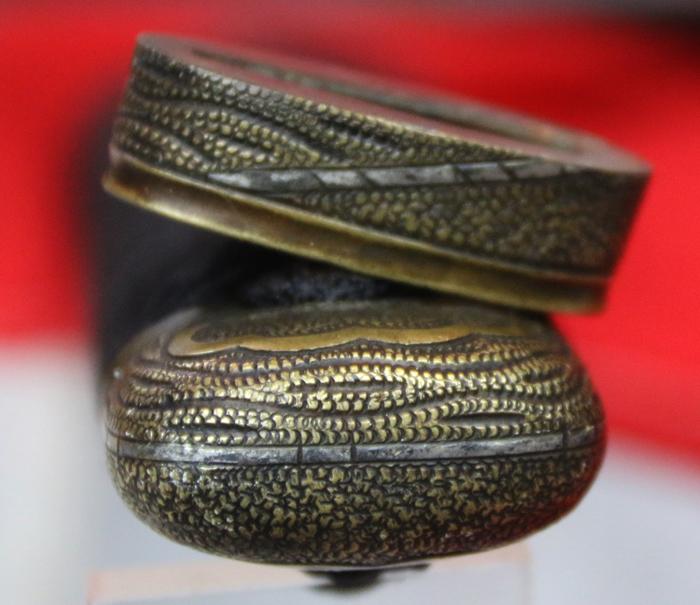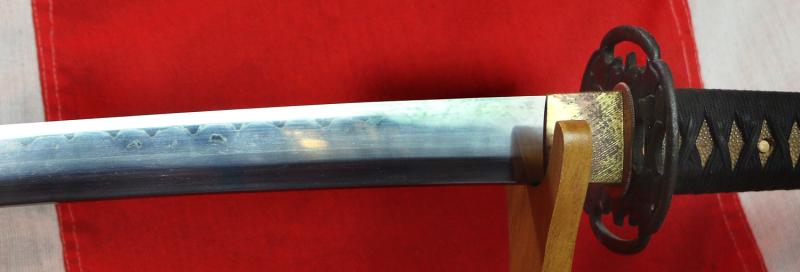A Most Impressive & Stunningly Beautiful Bladed Antique Shinto period, Edo Era Samurai Horseman's Katana. Matsushiro Sinano School Koshirae
A simply amazing sword, of the 1700's, with a blade of breathtaking beauty, with a highly complex and attractive gunome hamon, with 'crabclaws', 'islands' and 'gems' of hardened temper. It gives the impression of a mountain range { somewhat like multiples of Mount Fuji} and crashing seas.
All original Edo period fittings, and a superb takebori iron sukashi tsuba. The fuchigashira and sayagaki and jiri are all matching brass decorated with fulsome designs and silver striping. Fully matching suite of sinchu and contrasting silver line mounts to the tsuka and saya, of the Edo Matsushiro Sinano school The saya has all its original period Edo lacquer impressed with a cloud patterning, and in dark bulls blood red. The menuki are horsemen's saddle stirrups, called abumi, and a horseman's yari pole. The blade has a superb and elaborate gunome hamon.
This is a katana made for a senior ranking samurai based on horseback in combat, certainly not a light and cursive katana, but a battle sword, made to complete an uncomprimising task of close combat and aggressive swordmanship.
Designed as much for cleaving armour and helmets in two, as much as defeating another samurai on horseback. Although samurai would not, one would say, be a cavalry based warrior, all senior samurai would be mounted and thus travel on horseback, and some cavalry type samurai could be deployed in battle, but with differing combat styles depending on what part of Japan they came from. The cavalry troops, being Samurai, had personal retainers that stayed closer to them in the Sonae, carried their weaponry and worked as support units, much like an European squire. They also joined the fight whenever possible (especially in the mounted infantry scenario) and were often responsible of taking heads for their lords.
These foot Samurai were also used as heavy infantry or archers to support the ashigaru lines.
Tactics
Given the fact that the Samurai could directly dismount and operate as infantry, there were some specific tactics for horsemen.
Cavalry in general was only used after the battle was already started, either to deliver a decisive victory or to trying to save the day.
Norikiri
This is a classic charge, where several small groups of five to ten horseman ride consequently (possibly with a wedge formation) into a small area against the enemy lines, to maximize the shock. It was mainly used by heavy cavalry in the East, but given the fact that the ideal target where "weavering" units with low morale or disorganized, even medium cavalry could perform this charge.
The main role of this charge was to create confusion; if it didn't succeed, the cavalry regroups and either retreat or deliver another charge.
Norikuzushi
This is a combined infantry and cavalry charge. The horseman charged first, and after creating mayhem, a second charge is delivered by infantries armed with polearms, which could keep on fighting. The main target for this tactics were ranged units detached by the army. After a Norikuzushi usually follows a Norikiri by the cavalry group. 28 inch blade tsuba to tip. The saya has some old wear marks, but very nice indeed and untouched.
Code: 25240
6750.00 GBP



